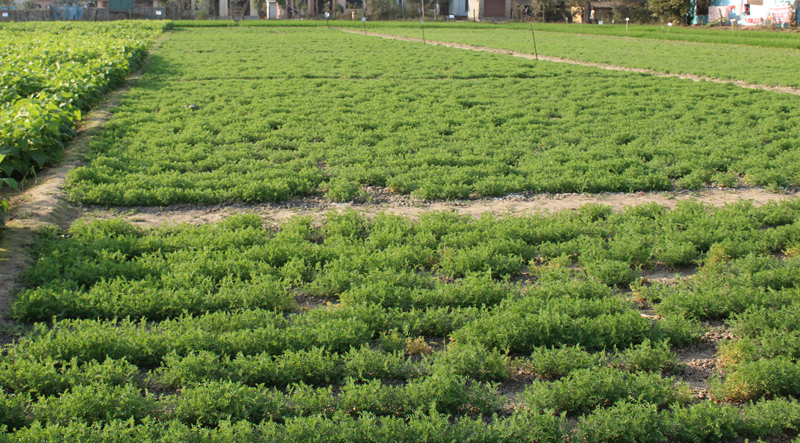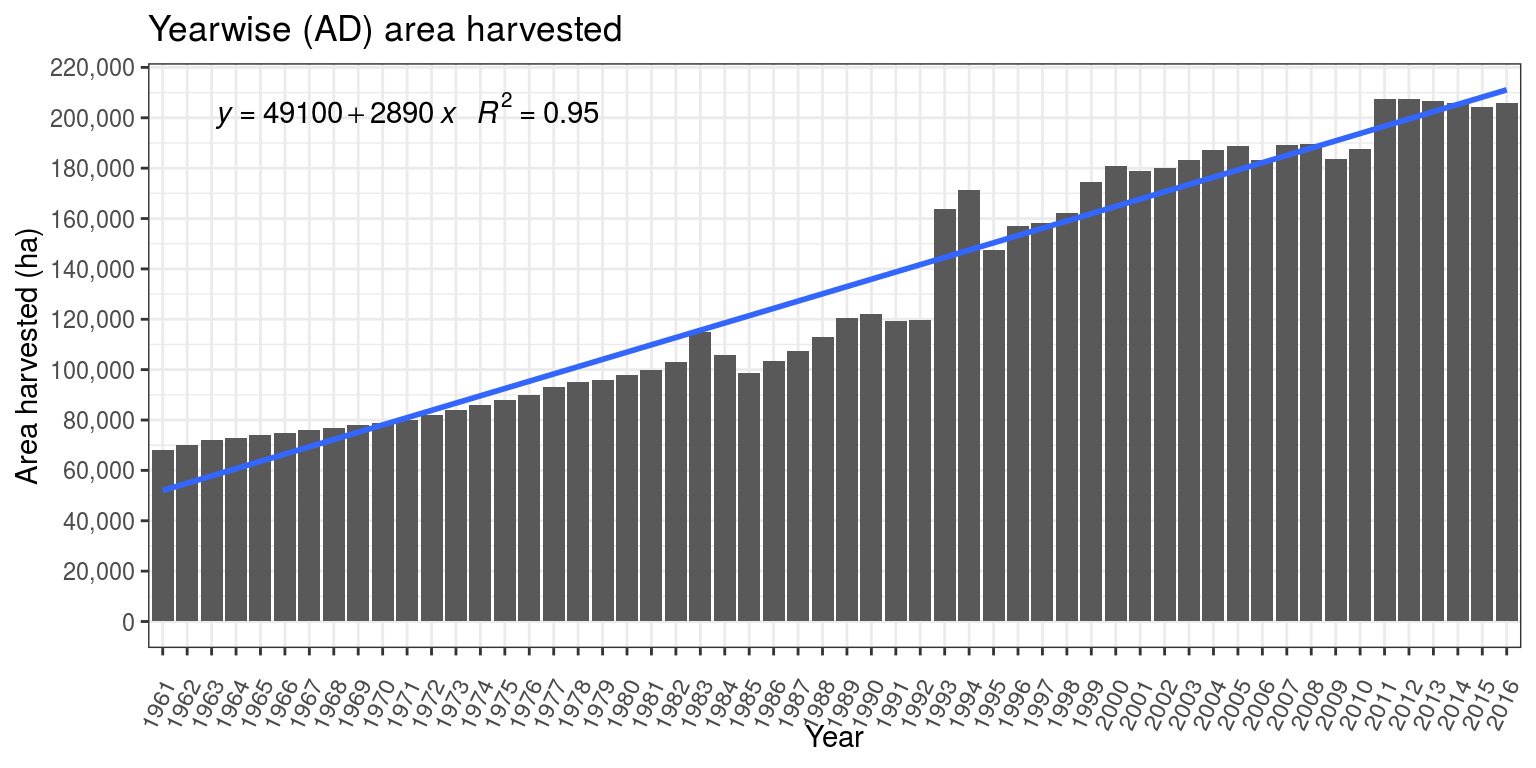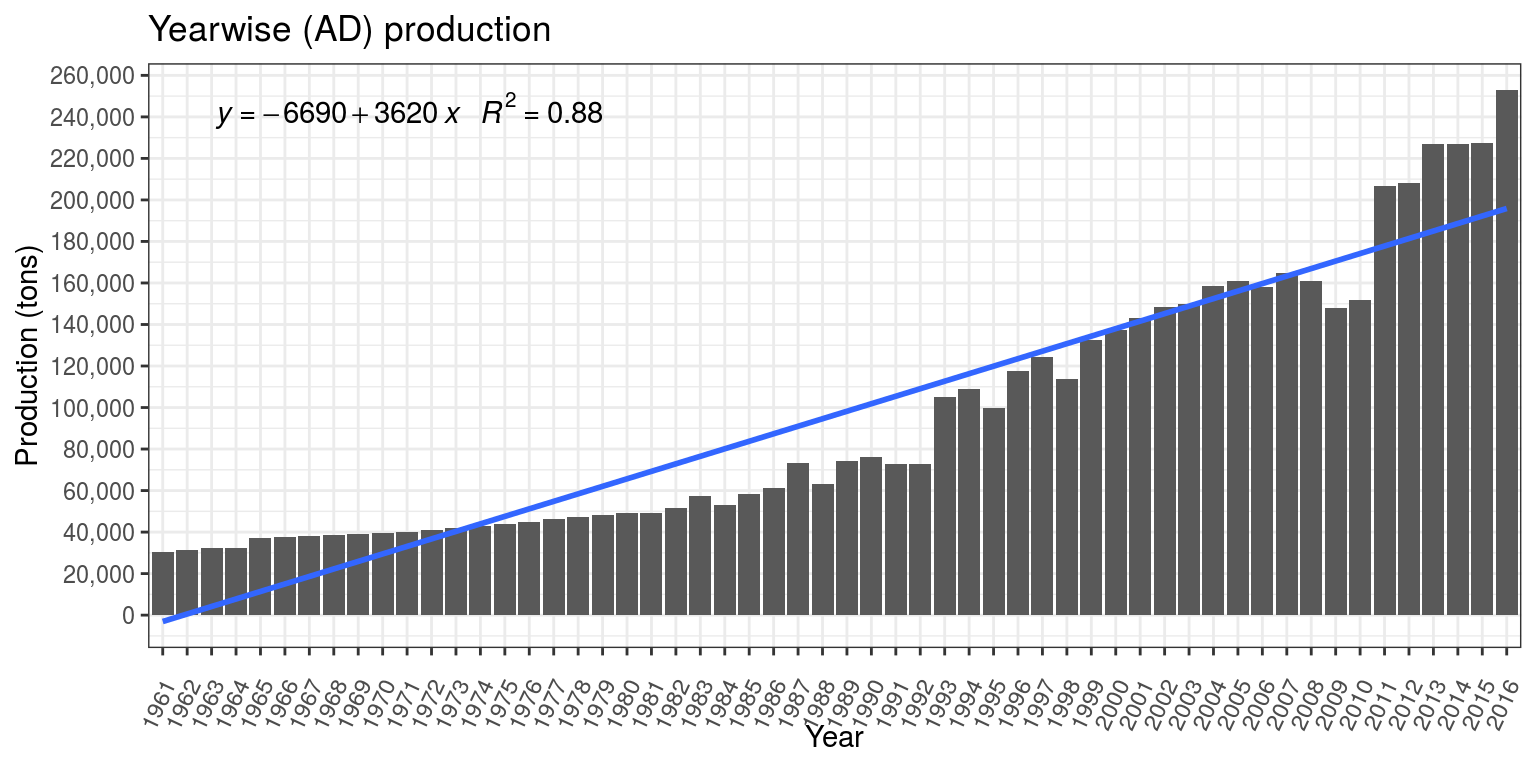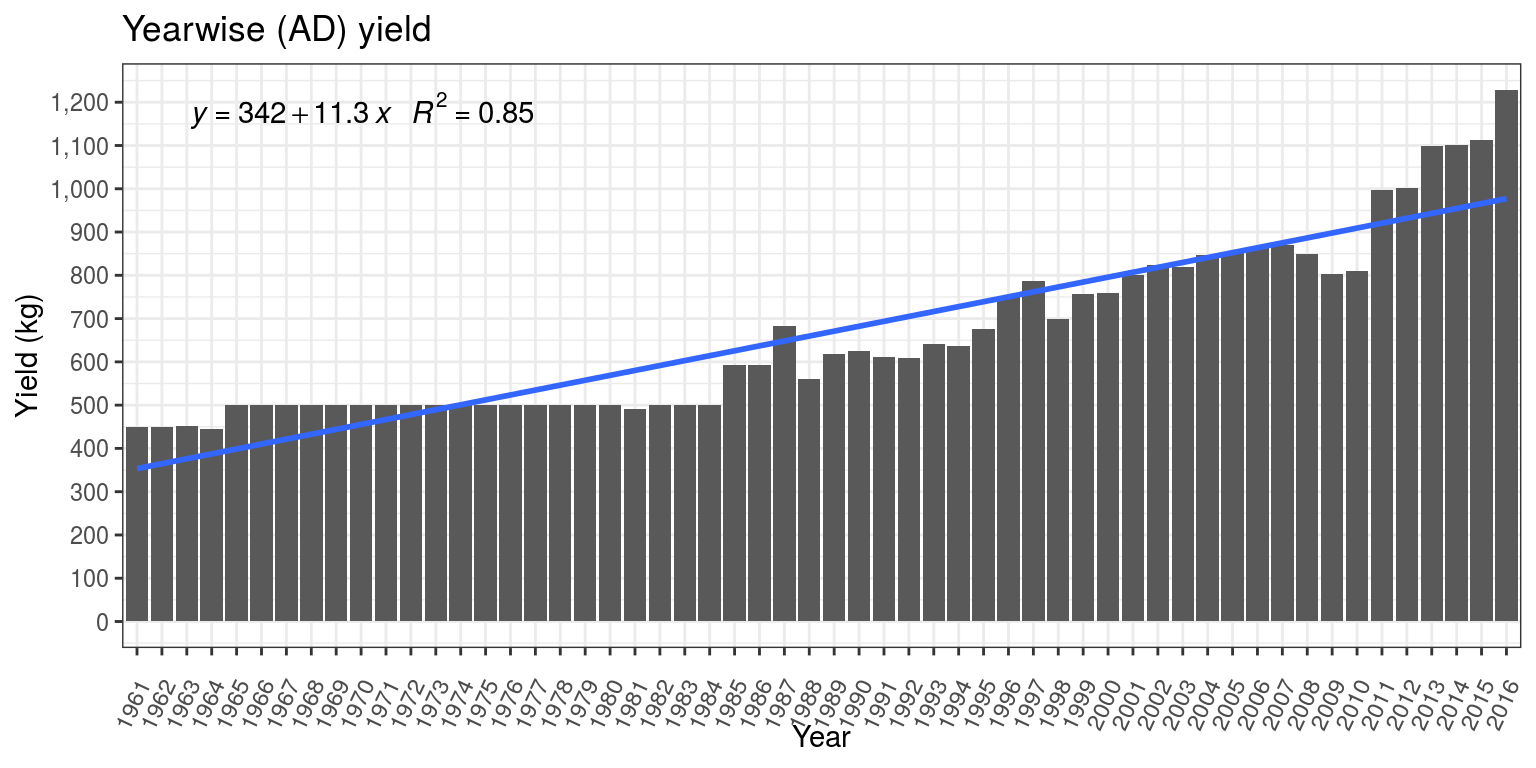 Lentil seed production plot; Source: Image collection of Unique Seed Company, Dhangadhi, Nepal
Lentil seed production plot; Source: Image collection of Unique Seed Company, Dhangadhi, NepalVarietal database of lentil in Nepal
This one is my effort to compose an updated database on the current situation of lentil germplasm in Nepal. I’ve managed to list out the varieties that have been made available so far (either through release or registration process). Although, a lot of other popular genotypes are trending in cultivation as of now. I consider NARC’s varietal catalogs to be the most authentic, so have borrowed most of the information from these published documents.
Several inconsistencies exists even among higly praised documents, mainly for the attributes that are most affected by environmental variation; these include, but not limited to, yield, days to flowering and days to maturity traits. Besides that, publishers should also have assisted the records with the mention of cropping system in which the varieties were raised. It’s implication cannot be underemphasized, and real case scenario could justify that. For example, a crop certainly yields much in a sole cropped situation in contrast to when it is grown as mixed crop. A reasonable comparison between these two systems of cultivation cannot be made precisely. So, it’s best to leave with an explaination about how crops were grown in these types of situation. Wherever possible these values should be further contextualized (for example by, noting the actual location it were grown in, the season it was sown, etc.).
As for this post, the database will to be updated as the information comes along to reflect the latest details. Following is a list of released and registered varieties of lentil:
| Variety | Parentage | Origin | Certified Year | Certified Year (BS) | Days to maturity1 | Days to maturity2 | Protein (percentage) | Production1 (ton_per_ha) | Production2 (ton_per_ha) | Recommended Area | Special characteristics |
|---|---|---|---|---|---|---|---|---|---|---|---|
| Simrik | T36 | India | 1979 | 2036 | 138 | 143 | 25.0 | 1.5 | 2.11 | Hills, Inner Terai and Terai | Medium bold seed, wilt tolerant |
| Sisir | P43 | India | 1979 | 2036 | 150 | 25.0 | 2.0 | 1.54 | Hills, Inner Terai and Terai | ||
| Sindur | Nepal | 1979 | 2036 | 133 | 148 | 25.0 | 1.5 | 1.78 | Hills, Inner Terai and Terai | Wide adaptation | |
| Simal | LG7 | India | 1990 | 2046 | 143 | 143 | 27.0 | 4.1 | 1.10 | Hills, Inner Terai and Terai | Small seed |
| Shikhar | ILL-4404 | Pakistan | 1990 | 2046 | 143 | 27.4 | 3.5 | 1.09 | Hills, Inner Terai and Terai | Wilt tolerant | |
| Khajura Masuro-1 | LG198 | India | 1999 | 2056 | 128 | 1.5 | Mid and far western terai | ||||
| Khajura Masuro-2 | ILL-2573 | ICARDA | 1999 | 2056 | 134 | 2.1 | Bold seed, wilt tolerant | ||||
| Shital | ILL-2580 | ICARDA | 2004 | 2061 | 134 | 1.1 | Terai and Midhills | Wilt tolerant, brown seed | |||
| Maheswor Bharati | ILL-7982 | ICARDA | 2007 | 2064 | 111 | 1.4 | Midhills, lowhills | Wilt tolerant, bold seed | |||
| Sagun | ILL-6829 | ICARDA | 2007 | 2064 | 98 | 1.3 | Bold seed | ||||
| Khajura Masuro-3 | RL-4 | Nepal | 2016 | 2073 | 148 | 1.5 | Terai and river basins | Stemphylium blight tolerant, high Se, Fe and Zn containing |
It it very unfortunate that we have very contrasting information published (without explaination) in different versions of national databases. For instance, in Table 1, Production1 (ton_per_ha) column was borrowed from “Krishi Diary, 2075” and the other column for the same yield trait (Production2 (ton_per_ha)) from elsewhere. I defer the exact reference and citation for a later date.
As to the status of cultivation of lentil, recent data shows that there is, in overall, a rising trend of lentil cultivation in Nepal, albeit the progress has slowed down in recent years. Below, I summarize the historical trend reported since 1961 A.D. of cultivated area, production and productivity.

Figure 1: Historical trend in cultivated area of Lentil

Figure 2: Historical trend in production of Lentil

Figure 3: Historical trend in productivity of Lentil
*Note: The database referred to in summarizing above figures.